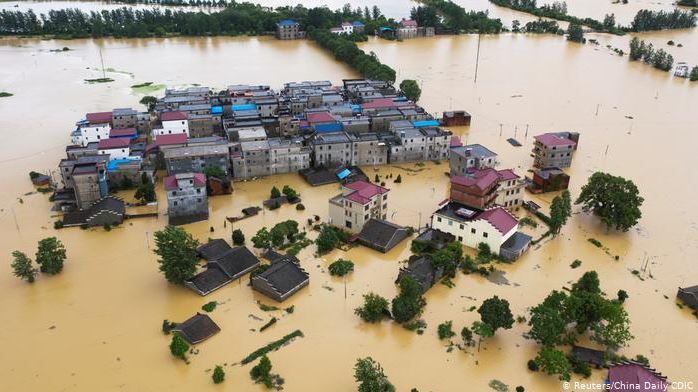
On the heels of the draconian citywide lockdown that lasted 76 days, Wuhan, the epicenter of the novel coronavirus, is facing another fatal disaster, heavy rainstorms and flooding. As the capital of Hubei province is slowly returning to normal—businesses reopening, students returning to school, and people embracing the hustle and bustle of the city, the central government has issued since early June flood alerts for 433 rivers, including 33 where water levels have broken historical records. For several weeks, torrential rain has continued to batter eastern, central and southern provinces, affecting at least 27 million people. Wuhan is no exception. Wuhan is in hot water.
Wuhan lies at the heart of Central China, divided by the Yangtze and Han rivers. As a result, Hubei province, where Wuhan is located, is severely affected. The Yangtze River region saw its second-highest day of rainfall in over 50 years, according to Chinese authorities. Such an extreme rainfall event is an example of climate change. Extreme weather patterns are unexpected, severe, unseasonal and regional. Unfortunately, there’s little connection to climate change in Chinese reporting on flooding. Climate change doesn’t respect borders. The rapid melting of the Himalayan glaciers due to climate change may also be a cause of more flooding in China. In fact, the neighboring countries of Southeast Asia countries should be concerned about climate change-induced flooding.
China underreports the cause of flooding partly to downplay its widespread construction of dams in the upstream of the Yangtze. Frankly, I am not a fan of dams after I learned about them from my sustainability graduate program. Dams cut off connections between rivers, lakes and floodplains, and reduce aquatic biodiversity. Hydroelectric dams are big methane emitters. Methane (CH4) is a greenhouse gas like carbon dioxide. After a dam is built, water can no longer travel where it used to flow. A huge amount of vegetable matter, such as plants, trees, leaves and twigs, is left in the dead water, rotting beneath the surface of the water. Rotting vegetation produces methane which is stored up in the mud. When the dam gate is open, the stored up methane is released suddenly in a huge volume like an erupting volcano. A study shows that rotting vegetation creates 25% more methane than previously thought in hydroelectric dams. Chinese leaders have a thing for hydroengineering. The mushrooming Chinese dams on the Mekong River are changing the ecosystems of the geopolitical region, leading to more far-reaching complications for the lower Mekong countries—Myanmar, Laos, Cambodia, Thailand and Vietnam for generations to come. Climate change will aggravate livelihood vulnerability in the Mekong region. China cannot self-isolate from climate change either.
The 2020 deluge broke records—the water level in Poyang Lake, the largest freshwater lake in the country, is crossing the 22.5 meters or 74 feet mark, for the first time since 1998. While China is battling flooding and COVID-19, locust swarms are invading the vegetation in southwest China’s Yunnan province. The yellow-spined bamboo locusts were first discovered in late June crossing the Myanmar border. Myanmar agriculture authorities have warned about desert locust swarms that are wreaking havoc on crops in India and Pakistan. If we look back early this year, locusts swarms were seen in eastern Africa. They traveled and found food in India and Pakistan. Summer is locusts’ breeding season. According to the UN Locust Watch, these pests may breed in areas of recent rains on the Red Sea coast in Yemen and Saudi Arabia. Coupling with global warming, China’s current excessive rainfall could provide ideal breeding conditions for locusts. The exponential growth of pests will further exacerbate food insecurity and livelihoods.
In 2020, we witness communities ablaze in forest fires, crops destroyed by locusts, bridges and houses collapsed in floods, and human life lost in the battle of a novel zoonotic disease caused by a coronavirus. We often ask nations to do more about climate change. We might ask: what might climate change do to us? There is no option for any nation or individual to self-isolate from climate change. Wuhan is in hot water today; any city will be the next tomorrow.
